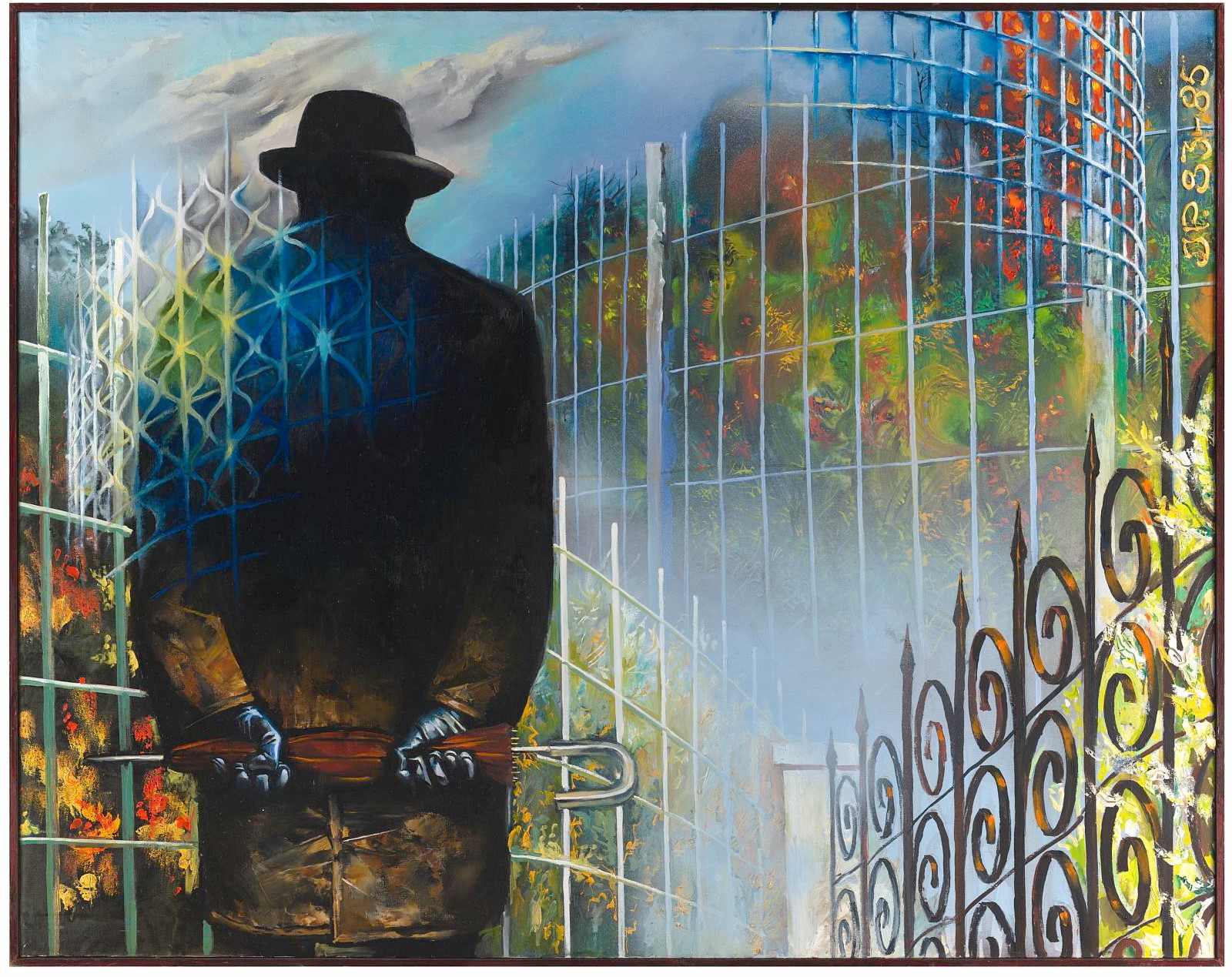
Jüri Palm. Aedade labürint
Opening of an international surrealism exhibition at the Estonian National Museum
Monday, 01. apr 2024
*
On 4 April, the Estonian National Museum will open the exhibition “Surrealism 100. Prague, Tartu and Other Stories…”, curated jointly by the Tartu Art Museum and the National Gallery Prague. Visitors can enjoy works by the most renowned Estonian and Czech surrealists from the 20th and 21st centuries. The exhibition is part of the main programme of European Capital of Culture Tartu 2024.
“Surrealism 100. Prague, Tartu and Other Stories…” is an exhibition where Czech and Estonian surrealism start a dialogue. At first this might seem like a surprising combination, but the two states share a complicated history under the influence of the Soviet Union in the 20th century. Like Estonian art and culture, the art of the Czechs and the rest of Central and Eastern Europe has been undeservedly left out of the scope of larger narratives.
“This year marks the 100th anniversary of the surrealist literary and artistic movement, which has offered over the century inspiration to many creators and compelling experiences to wider audiences,” says one of the curators, Joanna Hoffmann. “2024 is also the year when Tartu, the capital of surrealism in Estonia, is the European capital of culture. Therefore it is prudent to tie these two important events together and to celebrate them even more grandly,” Hoffmann adds.
Outside of Paris, Prague was the most important centre of surrealism in Europe during the 20th century: the artists communicated closely with their Parisian counterparts and a programmatic approach was used for surrealism. The most important authors of the surrealist movement in Prague were Toyen and Jindřich Štyrský from the first generation, Mikuláš Medek, Emila Medková, Josef Istler and Václav Tikal from the second, and Jan Švankmajer and Eva Švankmajerová from the third.
In Estonia, surrealism was approached in a less organised manner. Many artists, such as Eduard Wiiralt and Karin Luts, included surrealist motifs in their works, but they did not dedicate themselves to the movement. Ülo Sooster and certainly Ilmar Malin can be seen as the most consistent surrealist authors in Estonia. The latter was also one of the founders of the surrealist artists’ group PARA ’89. Fascinating examples of surrealism can also be found among the oeuvre of numerous Estonian artists of the 20th century and can be proudly presented to the public on the occasion of the 100th anniversary of this internationally renowned movement. Western Europe forcefully tells its own story, and it is time that we on this side of Europe do the same.
Besides works by Estonian and Czech artists, visitors can also enjoy a print by Salvador Dalí belonging to the Tartu Art Museum, as well as works by such authors associated with the surrealist movement as Luis Buñuel, Max Ernst, Man Ray and Giorgio de Chirico.
The exhibition is accompanied by a richly illustrated extensive catalogue introducing Estonian and Czech surrealism.
Curator of Czech surrealism: Anna Pravdová, PhD (National Gallery Prague)
Curators of Estonian surrealism: Joanna Hoffmann (Tartu Art Museum) and Kristlyn Liier (Tartu Art Museum)
Graphic design: Valter Jakovski (Ruum 414)
Exhibition design: Neeme Külm and Kadri Villand (Valge Kuup)
Coordinator: Kristlyn Liier
Additional information about exhibition: https://www.erm.ee/en/surrealism100
The exhibition is part of the main programme of European Capital of Culture Tartu 2024.
Photo: Jüri Palm. Aedade labürint.
Additional information:
Aivi Jürgenson
Head of Communications and Marketing
Estonian National Museum
aivi.jurgenson@erm.ee
5866 7773


